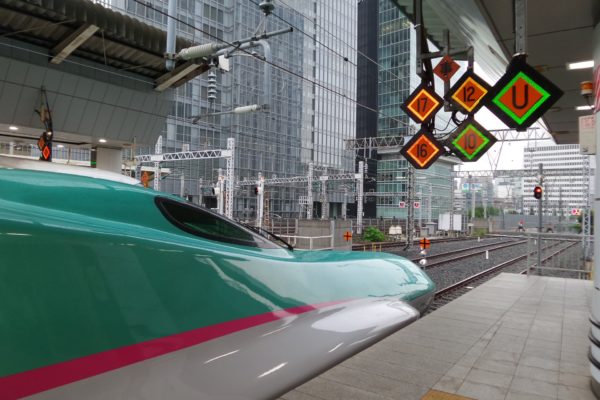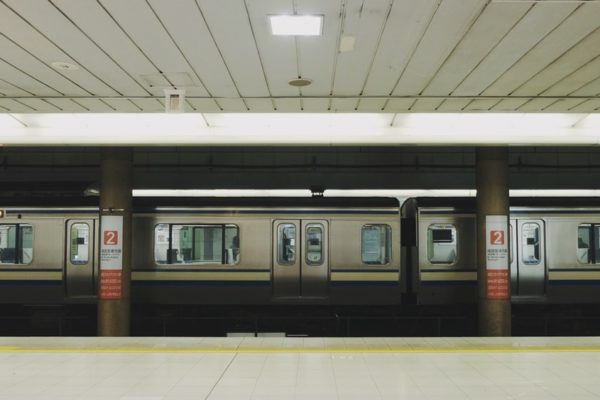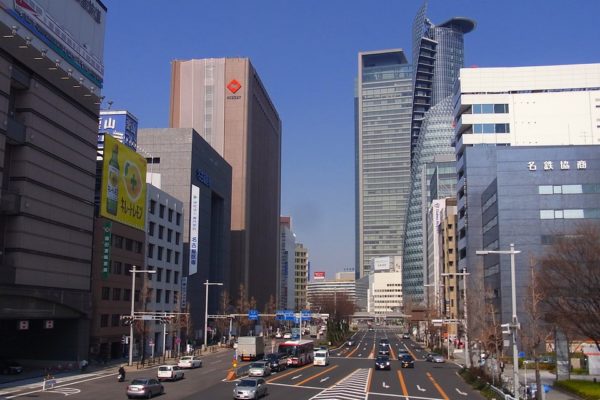Japan’s public transportation system is highly-regarded for its efficiency and punctuality. It makes travelling to any part of the country easy and convenient for locals and tourists alike.
Long-distance travel
There are a number of options to choose from when it comes to long-distance travel within Japan. Which one to use depends on a variety of factors, such as your budget, how fast you wish to arrive to your destination, and what amenities you would want to have to ensure that your trip is as comfortable as you would like it to be.
Plane
There are many airline companies that offer domestic travel in Japan. Japan Airlines (JAL) and All Nippon Airways (ANA) are the big two that operate the majority of the flights in the more than fifty airports all over the country. There are also a number of smaller airlines — such as Peach Aviation, Vanilla Air, Jetstar Japan, Air Do, Air Asia Japan, Spring Airlines Japan, Starflyer, IBEX Airlines, and Fuji Dream Airlines — that offer flights at cheaper rates, perfect for travellers on a budget.
Shinkansen
Most of Japan’s major cities are connected by a high-speed bullet train network that is run by the Japan Railways Group (JR Group). Known as the Shinkansen, these bullet trains can travel up to speeds of 320 kilometres per hour.
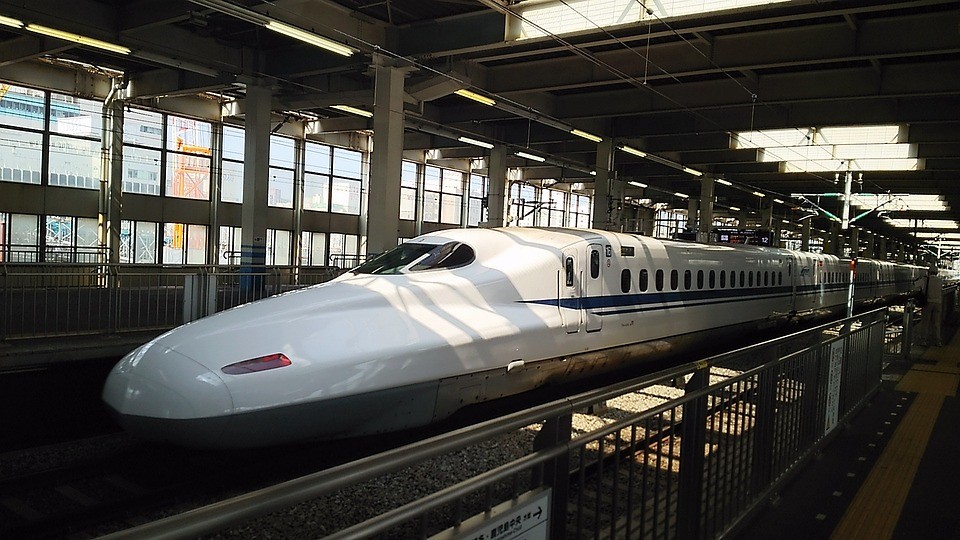
Shinkansen lines run from Hakodate in the north to Kagoshima in the south, from Tokyo in the east to Hiroshima in the west, and vice versa, almost all day long. They offer comfortable, cushioned seats with sufficient foot space and luggage space in both their ordinary cars (regular type seats) and green cars (business class type seats); toilets; smoking areas; electrical outlets in every seat; and food trolleys with quite a good selection of beverage, snacks, and bento.
If you expect to use the Shinkansen a couple of times in your trip, consider getting the Japan Rail Pass (JR Pass), which offers unlimited rides on most of the Shinkansen lines and JR-operated trains, buses, and ferries across Japan, for 7, 14, or 21 days. Check out our post on Japan Rail Pass FAQ’s for more information.

Regular trains
Some Japanese cities are not part of the Shinkansen network, so getting there can be done via regular trains.
In the Hokkaido region, for example, the Hokkaido Shinkansen line only goes up to Shin-Hakodate-Hokuto Station. So, from there, you take a local train, a rapid train, a limited express train, or a combination of these to get to Sapporo, Wakkanai, Asahikawa, Kushiro, Abashiri, and other parts of Hokkaido.
Highway Buses
Highway buses are recommended to budget travellers who do not mind travelling slower or spending the night on a reclined seat to save a night’s worth of hostel stay or several thousands of yen on a Shinkansen ticket.
To illustrate, a one-way, 135-minute Shinkansen ride from Tokyo to Kyoto costs around 13,000 yen, while a one-way, 9-hour overnight bus ride costs only 4,000 yen.
The JR Group and Willer Express have highway buses that serve interregional and intercity routes all over the country. They typically offer reclined seats with trays and cup holders, overhead luggage racks, storage trunks, electric outlets, and toilets. Learn more about the different highway bus routes, ticket prices, and reservation procedures on Japan Bus Online.
Travelling within a city
Getting around any Japanese city has been made easy and convenient for tourists by city buses, metro and subway trains, and cabs.
Metro or subway
Japan’s popular tourist cities, such as Tokyo, Osaka, and Kyoto, are served by extensive metro and subway train networks operated by Japan Railways and other private companies.
Train operations typically begin at around five in the morning, and end around midnight, and trains come and go every three to twenty minutes or so. A lot of a city’s most popular sightseeing spots are a short walk or bus ride from metro and subway stations.
City buses
City buses are an alternative to the metro and subway to get around many cities in Japan.
In Tokyo, Kyoto, Osaka, Hiroshima, Sendai, Nagoya, Kanazawa, and other favourite tourist metropolises, there are even special city buses that follow a tourist sightseeing route, meaning they only stop at the most famous attractions in the city to give visitors quick and convenient access to places that are high on their must-see lists.
Cabs
Some of the most interesting hidden gems and off-the-beaten path attractions in Japan are way out of the train and bus routes, so taking a cab is a good way to reach them.
There are usually cab or taxi stands found outside train stations and other landmarks in any Japanese town or city. For non-Japanese speakers, it is advisable to have the Japanese address of your destination on a piece of paper or marked on a map to easily relay to the cab drivers where you want to go.
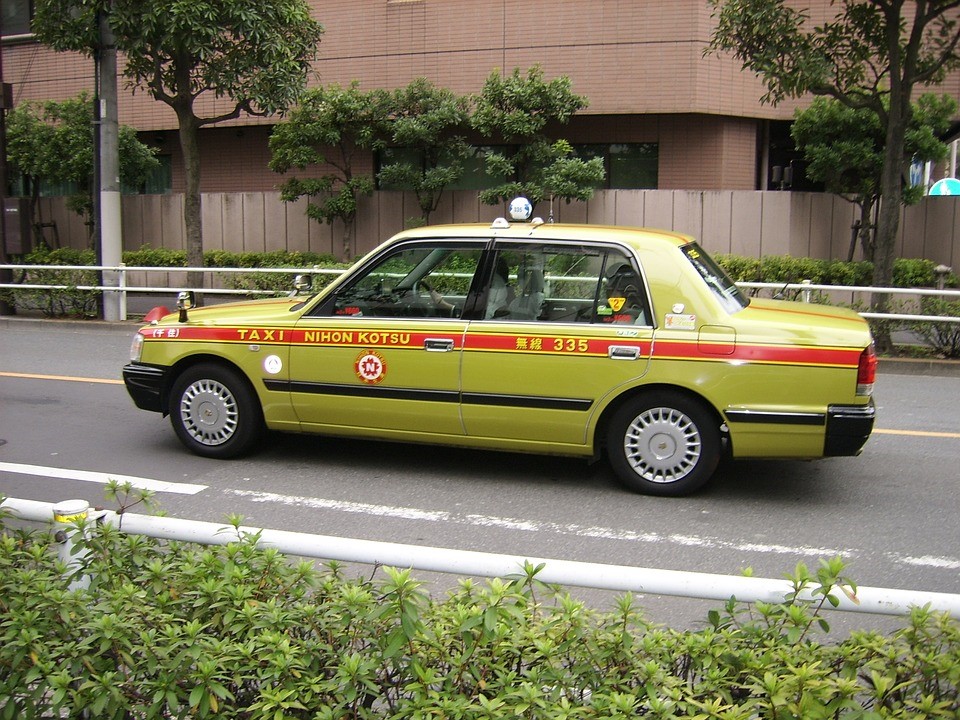
Other modes of transport
Rental cars
Much of the Japanese countryside tends to not be very accessible via public transportation, so rental cars are a convenient and economical option, especially if travelling with a group or with tons of luggage.
You can rent a car at a rental car company booth found at airports and major train stations once you are in Japan, or make an advanced online reservation through these car rental companies’ websites, such as: Toyota, Nippon, Nissan, and Times.
Ferries
An archipelagic nation made up of more than 6,800 islands, Japan has a reliable ferry network that offers a wide variety of amenities, which include tatami mats and beds for long-distance routes, restaurants and lounge areas, and even public baths. Check out aferry.com for information on the different routes and bookings.
Bicycles
Biking is a fun, healthy, and economical way to explore Japan, particularly the small towns, where tourist spots are not that far away from one another but are too taxing to get to on foot.
Many hotels and hostels in the country provide free bicycles for their guests or rent them for a small fee (typically around 1,000 yen for one whole day of use).
Some of the best places in the country to explore by bicycle are Kyoto, Biei, Shimanami Kaido, Hagi, Otaru, and Naoshima Island.

